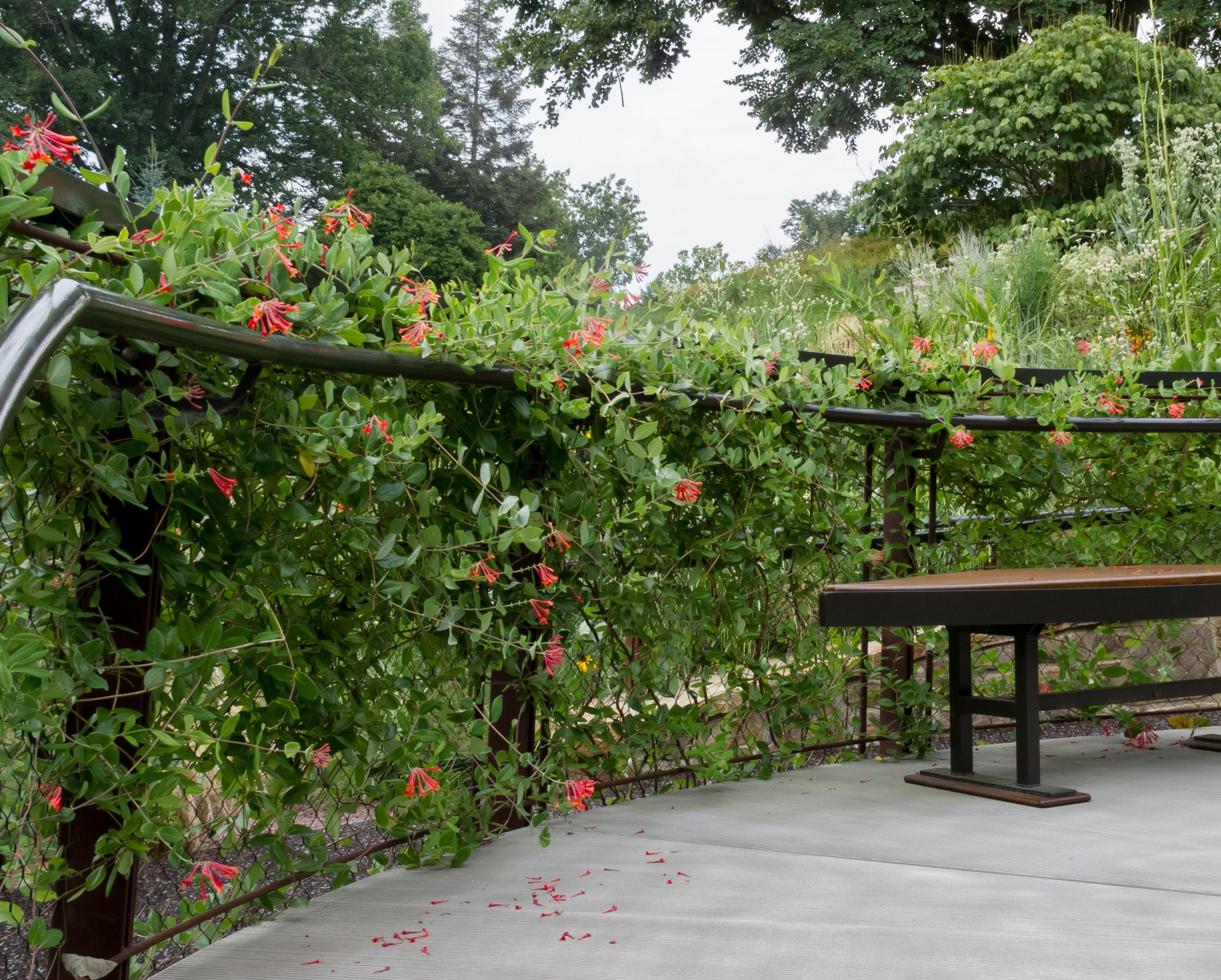Using vines in the garden
Vines—plants with running or trailing stems—can be both functional and decorative in any type of garden. For functional purposes, vines may be used to provide shade over porches, decks, or patios; decorate fences, walls, or doorways; cover and stabilize slopes to prevent erosion; and screen unsightly views or “soften” the appearance of objects. Vines can also offer food and shelter for birds, butterflies, and beneficial insects that share our green spaces and provide valuable ecosystem services. No matter your goals, vines offer a rich source of material for creating interesting, graceful, and beautiful plantings.
Growth habits of vines
Vines can be divided into groups based on their method of climbing:
Clinging
Clinging vines attach themselves directly to a surface. Examples are Virginia creeper (Parthenocissus quinquefolia) and climbing hydrangea (Hydrangea anomala subsp. petiolaris). They climb by growing small root-like holdfasts that attach to a wall or other structure. Sometimes these holdfasts are modified tendrils with small circular discs at the tips.
Grabbing
Grabbing vines use winding tendrils or leaf-like appendages to grab onto their supports. Examples of grabbing vines are Clematis and grapes. Twine or wire can be used on these vines to give them additional support on a trellis if needed.
Twining
These vines climb by wrapping their stems around their supports. Examples include wisteria and honeysuckle. All vines do not twine in the same direction, yet the method of climbing is not haphazard. The plants of a particular species invariably twine in one direction, so it is important to start the winding of young vines around their support in the correct direction. For example, American wisteria (Wisteria frutescens) twines in a counter-clockwise direction.
Sprawling
Sprawling vines, such as roses, lie on their supports. To remain tidy, sprawlers need to be tied or wired, or interwoven into their supports.
